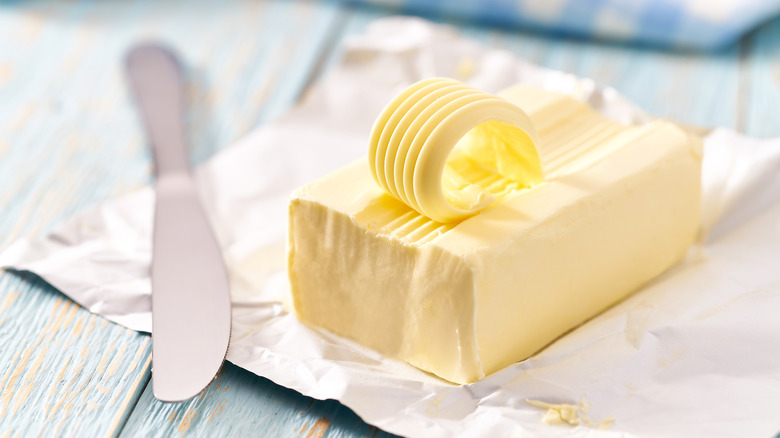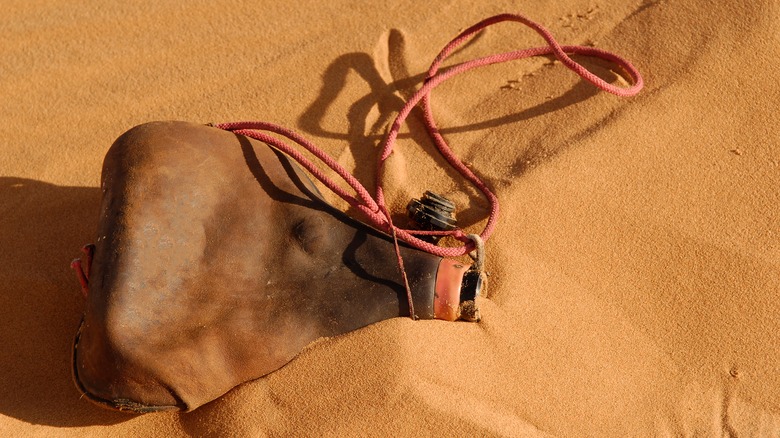The First Butter Was Invented By Accident And It Didn't Come From A Cow
Where would we be, as home cooks and bakers, without butter? This pinnacle of the world of dairy brings a world of flavor and a rich texture to so many of our favorite dishes, from a simple omelet to the hollandaise sauce that tops indulgent eggs Benedict to a flaky croissant. Butter can be spread across a slice of great bread, clarified into ghee for cooking, or toasted until nutty and swirled into brown butter banana bread.
In case you didn't know, butter is simply any type of milk — from a cow, sheep, goat, or any other mammal — whose creamy top layer is churned or otherwise agitated until the fat within its fatty acid and protein membranes is released, causing the cream to coagulate into that semisolid we all love and leaving buttermilk behind (via MasterClass).
And as it turns out, butter was very likely first invented by accident, by a long-journeying traveler whose shaky pack animal mode of transportation jostled his milk into something quite different.
Butter's invention could date back to 8,000 B.C.
According to Elaine Khosrova, author of the 2017 book "Butter: A Rich History," butter is one of those many culinary delights — such as chocolate chip cookies (via Insider) and Popsicles (via NPR) — that was supposedly invented by accident. In her book, according to NPR, Khosrova writes that the butter's invention likely traces back to Neolithic-era Africa, when, around 8,000 B.C., a nomadic sheep herdsman was traveling with his flock atop a pack animal. When the sheepherder reached back for his sheepskin to take a swig of the animal's milk, he found it coagulated into a mixture of butter and buttermilk, the shaky journey over uneven terrain having "churned" the sheep milk into something altogether different — and undeniably delicious.
"I felt like I had uncovered an epic story that very few people had been paying attention to," Khosrova told NPR in 2017. In her book, Khosrova, a former pastry chef, traces butter's origin story of accidentally-shaken yak, sheep, and goat's milk (not cow) through its intentional manufacture, a shift which may have occurred around 4,500 years ago, according to a limestone tablet uncovered by archaeologists. Since then, butter has gone on to acquire an exalted status: Ancient Sumerians offered it to the fertility goddess Inanna, while ancient Romans used it as a healing balm.
Today, butter is beloved by pretty much anyone who eats dairy, appreciated around the world, Khosrova said, for its many "nuances of flavors, textures, and color."

